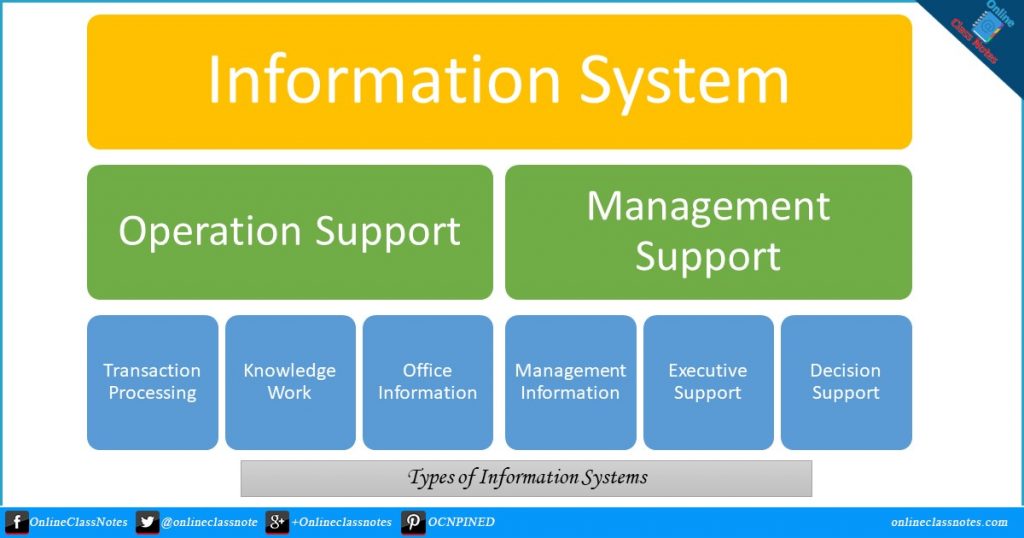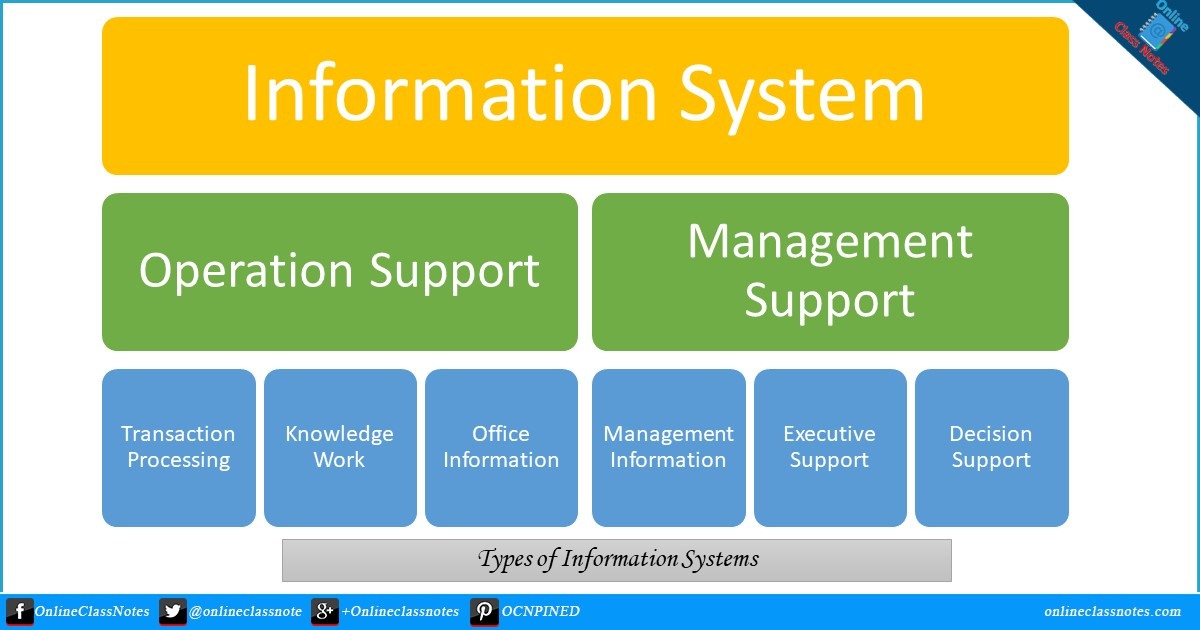An organization’s management generally includes one or more levels depending on the size of the organization and it’s managing areas. Different types of information systems are required for different purposes of these levels. However, information systems can be categorized as follows,
Types of information systems
- Operations Support System
- Transaction Processing
- Knowledge Work
- Office Information
- Management Support System
- Management Information
- Executive Support
- Decision Support
Operations Support System
An operations support system generally provides necessary information and creates documents for routine operations of an organization. Necessary sections of routine operations involves the following three

Transaction Processing Systems
This type of information systems facilitates daily accounting of an organization. Such as, sales registry systems, POS systems. hotel management systems etc. These systems help an organization to be running successfully. Transaction processing systems are generally an important section of any organization’s work flow. If transaction processing system isn’t working for an hour or few days, the organization may fall into trouble. Such as, consider a POS. If a super shop is dependent on it’s POS and the POS isn’t working for an hour, the whole organization will fall into a trouble managing it’s sales.
Knowledge Work Systems
The level at which one uses one’s thinking and understandings to further understand a topic and take decision is the knowledge level of an organization. Knowledge work systems are made with a purpose to supply required information to those users who need to take decisions. Knowledge work systems generally creates reports and provide stored and processed documents as per requirements to users to further analyze a situation to take decision.
Office Information Systems
Office information systems runs at the lowest level in an organization where users generally do routine works like inserting daily data, processing documents and reports for daily operations etc. These office information system can automate an office with features like office automation.
Management Support System:
Systems which helps the management teams of an organization to take optimal or better decisions are management support system. Sections of these systems are as follows
Management Information System
These kind of information systems are generally report based systems which create reports for managers of an organization to better understand the current status of the organization. These systems helps reduce a tons of task of an organization, such as collecting a month long log for each employee working, their salary-attendance-completeness etc. As the reports can again be filtered and sorted to needs, it is very helpful for the managers to understand current status of the organization and to take plans and decisions for future.
Executive Support System
Information systems used by senior managers are called executive support systems. These information systems takes data from management information systems and decision support system, but along with these, the system takes data from insertion also. Such as, while taking a decision or future planning, the executive support system also presents data like changes business laws for that country or location etc. Executive support systems filters data more to sort out information received from management support systems and decision support systems.
Decision Support System
These information systems help users to take decision on smaller parts of an organization. For example, think of an factory where workers work in shifting time schedule. If an worker is about to be in leave, these decision support system instantly finds the next best suitable worker that can replace the missing worker and keep the factory running smoothly
